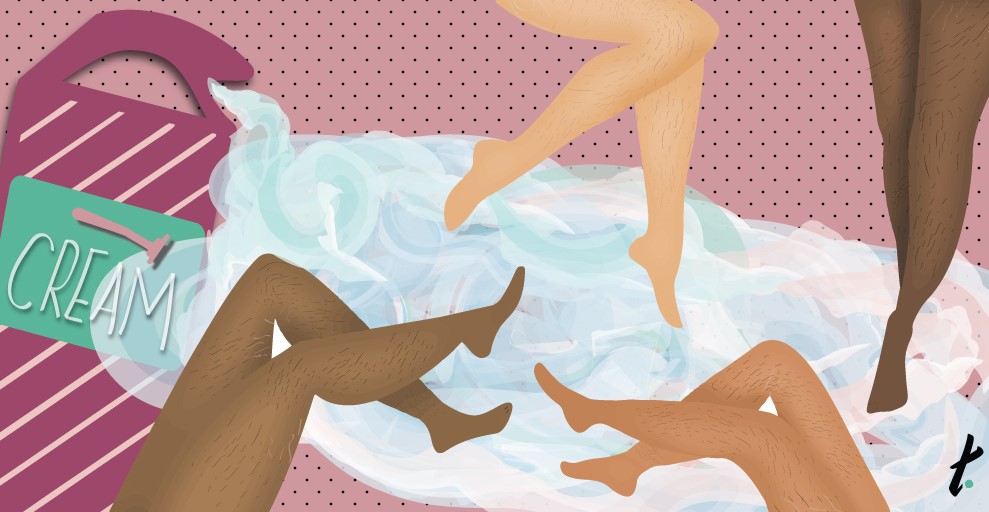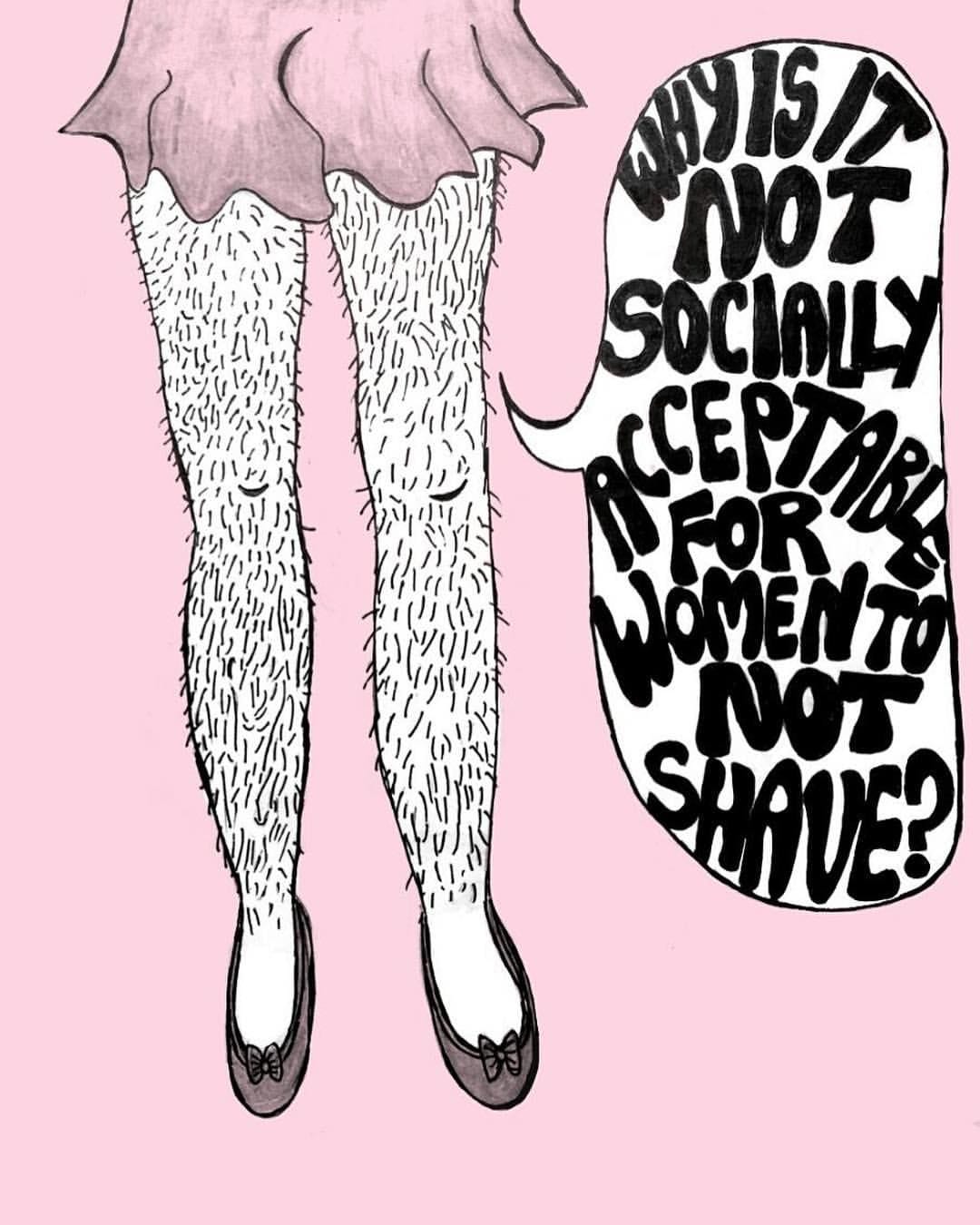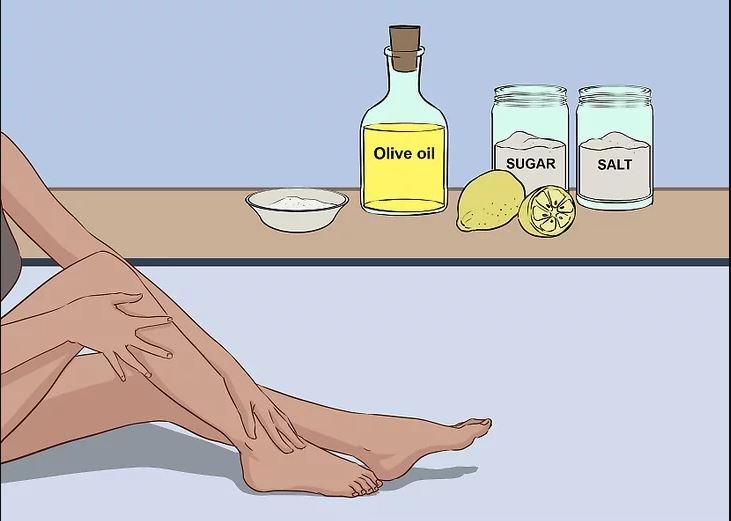Before I get started on this, I just want to clarify that I in no way want to encourage the ridiculous pressures in society for females to be flawless and hairless.
On the flip side, if any gender wants to have hairless legs, they should also have that choice – fuck society’s rules. Personally, I don’t really give a shit about leg hair, but remove my armpit hair just because I don’t like the feel of it.
Image via The Tempest

The most environmentally friendly option is leaving body hair but, IF you are someone that uses any form of hair removal – read below for some eco swap options!
Disposable Razor > Stainless Steel Razor
As we have become a society of convenience, the use of disposable plastic razors has gained mass popularity. The plastic used in razors is generally able to be recycled. However, it’s not as it’s attached to a blade. The Environmental Protection Agency estimates that around 2 million razors, just in America, are thrown away each year. This plastic ends up in landfill or contributing to plastic pollution in the ocean.
Switching to metal razors is not only environmentally friendlier, lasting longer and not clogging landfill, but it’s also financially better. Spending money on cheap razors year after year adds up. Take the investment (roughly $40) and purchase a stainless steel safety razor, which is sold on a few sites online. This Unisex Safety Razor from Biome is a lifetime purchase, with only the blade needs replacing once worn.
If you absolutely insist on disposable razors, at least get these recycled plastic ones!

Image Via She Aspires
"Hair removal is big business, with it ‘forecasted to rise to about 1.35 billion U.S. dollars by 2022" - Statista, Global hair market size, 2018
Synthetic waxing > Sugar waxing
Strip waxing is painfully wasteful (and just plain painful). Wax strips contribute to a lot of paper and plastic waste, with in-salon hot wax generally made with synthetic resin (which makes plastic). Sugaring is a waxing process that’s been around since 1900 BC, using sugar or honey as the sticky wax agent instead of synthetic products.
Even though I’ve heard mixed reports, there’s a significant amount of claims online that sugaring is less painful and better for sensitive skin. It is something you are also able to do yourself (see DIY video below). However, I’d recommend finding a salon first.
Hair removal cream > Literally anything else
Hair removal cream absolutely stinks of ammonia (which is from Urea, yes that’s also in our pee), which should be your first red flag to step away. Not only does it come in lots of packaging, but hair removal cream is made from a long list of chemicals (read some here), which ultimately end up in your body and draining into the ocean.
There are also reported complaints online about skin irritation and burning. Seriously, step away from hair removal cream. If you are that serious about removing your hair, perhaps look into laser hair removal.

Image via Wikihow
Chemical shaving cream > Nontoxic shaving cream
Shaving cream is generally used for shaving beards but can be used for any area. If I’m shaving my legs or armpits, I use coconut oil as shaving cream. If you’re after an actual shaving cream, try to avoid the mainstream brands which are filled with chemicals and palm oil. There’s a long list of non-toxic and affordable shaving creams/bars available from Flora & Fauna or Lush Cosmetics. My personal favourite is Lush D’Fluff Strawberry Shaving Soap; which is a reasonable $12.50, will last and doubles as moisturizer with cocoa butter.
Exfoliant with microbeads > DIY natural exfoliant
Exfoliating is good for removing dead skin and getting blood pumping to the skin’s surface; it’s also especially good for hair removal. Mainstream exfoliants are starting to remove microbeads (made with plastic that ends up in the ocean), however still contain a bunch of chemicals.
The best swap is to make your own scrub from coffee waste and coconut oil, which is cheap and easy. Another option is to buy some natural scrub; Frank Body is a popular choice in Australia available online or at MECCA stores.


